Licorice, scientifically known as Glycyrrhiza glabra, is one of the most popular medicinal plants belonging to the Fabaceae family1. It is a perennial herb grown in temperate zones. The plant parts used are runners and roots, which are collected in the fall season. The medicinal use of licorice in western and eastern cultures dates back thousands of years, it is also one of the most common ingredients in Chinese medicine2. The name Glycyrrhiza is derived from the Greek terms ‘glykos’, meaning sweet, and ‘rhiza’, meaning root. It is native to the Mediterranean region and grown in India, China, Spain, Iran, Russia and Italy3. Licorice is also known as, Jothi-madh and Mulaithi (Hindi), Licorice, Liqourices, and Sweet wood (English), and Licorice, Liqourices, and Sweet wood (Sanskrit).
Did you know?
Licorice is the source of polysaccharides, simple sugars, proteins, amino acids, and mineral salts like calcium, sodium, potassium, iron, zinc, copper, phosphorous, magnesium, manganese, silicon, and selenium. It also contains vitamins like B1, B2, B3, B5, E and C. Pectins, starches, resins, and gums1.
The chief constituent of the roots is glycyrrhizin, a triterpenoid saponins 50 times sweeter than sucrose1.
I have great news for those suffering from indigestion problems! A study6 found that the root extract of licorice might be a natural and effective remedy for indigestion. It may reduce symptoms, improves individual discomforts, and boosts quality of life.
Dr. Siddharth Gupta, B.A.M.S, M.D (Ayu)
The properties of licorice are given as follows.
Due to its antibacterial and anti-inflammatory properties, there are many potential mulethi benefits and uses associated with licorice root extract4. Potential uses of licorice against some health conditions are given below.

The potential use of licorice in different cancers has been observed in lab-scale studies. However, more research is required to support the use of licorice against human cancer. Therefore, you are advised to strictly adhere to the doctor’s advice and treatment.
I would suggest licorice if you’re looking for a natural solution to keep your pearly whites healthy! It may have some incredible benefits for your oral and dental health. Yep, it’s true! Studies7 have shown that licorice and its powerful components are super effective against common oral problems such as cavities and gum diseases.
Dr. Rajeev Singh, BAMS

Oxidative stress and chronic inflammation are causes of chronic obstructive pulmonary disease. ISL has shown anti-inflammatory and antioxidant properties, due to which it was able to reduce the inflammatory cells in an animal study4. Licorice might be explored as a potential remedy for obstructive respiratory diseases. However, if you experience any respiratory problems, you must contact your healthcare provider immediately.
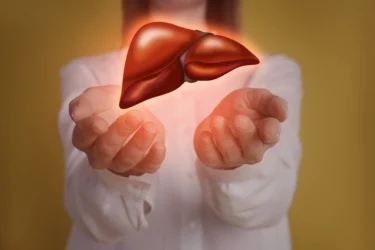
Glycyrrhizin, found in licorice root has shown liver-protective potential in viral hepatitis. Japan and China have developed glycyrrhizin as a liver protective medicine. The anti-inflammatory and antiapoptotic properties of glycyrrhetinic acid, a compound found in licorice, may provide liver-protective benefits4. However, if you are suffering from liver problems, reach out to your healthcare provider immediately and get a proper diagnosis.
I came across a study8 that showed the protective effects of licorice extract in the kidneys of diabetic rats. It suggested that it may help improve blood glucose levels and reduce kidney damage. Although licorice extract may be a natural super-hero for diabetes and kidney health, its effects on humans still need to be investigated.
Dr. Smita Barode, B.A.M.S, M.S.

Many laboratory studies4 suggest that licorice extract might be a potential agent against bacterial infection. During trials, licorice extract has shown promising results against Candida albicans and Staphylococcus aureus infections. However, infections require a medical diagnosis and treatment. If you experience any signs of infection, contact your healthcare provider before using licorice.
In my opinion, licorice root extract might just be your secret weapon against hot flashes. Licorice root extract shows promise for ladies going through menopause. It might act as a natural remedy for managing hot flashes9.
Dr. Anuja Bodhare, B.A.M.S, M.D (Ayu)
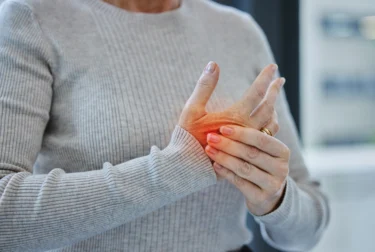
Inflammatory illnesses are becoming common and have a significant impact on daily life. Flavonoids found in licorice may be used as a potential medication for inflammation. Licorice extract has anti-inflammatory properties in managing various diseases, like acute kidney disease. ISL has shown anti-inflammatory activities in kidneys4. More research is needed to support the use of licorice in inflammatory conditions in humans. Therefore, talk to your healthcare provider and get a proper diagnosis.
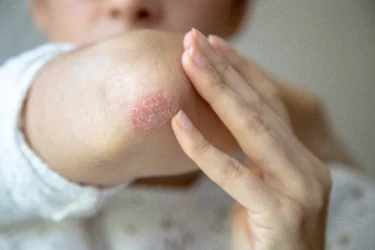
Though there are studies showing the benefits of licorice in various conditions, these are insufficient and there is a need for further studies to establish the true extent of the benefits of licorice on human health.
Also Read: Lemongrass: Uses, Benefits, Side Effects and More!
Roots and rhizomes of licorice can be used in the form of:
Your Ayurvedic physician will prescribe the form and dose as per your requirement.
You must consult a qualified doctor before taking licorice or any herbal supplements. Likewise, do not discontinue or replace an ongoing treatment of modern medicine with an ayurvedic/herbal preparation without consulting a qualified doctor.
Also Read: Shilajit: Uses, Benefits & Side Effects
Licorice is the word for mulethi in English. Potential mulethi side effects are shared below.
Before using licorice or any herbal remedy, you are advised to talk to your healthcare provider about the possible side effects associated with its use. It will help you avoid side effects.
Here are some general precautions you need to take with licorice.
Also, before using licorice for any health condition, you are advised to consult your doctor about the possible precautions associated with licorice.
Licorice root extract inhibits a major human drug-metabolising enzyme called the P450 enzyme. Therefore, it may increase the effects of drugs metabolised by the P450 enzyme2.
Also, if you are taking medicines for any health conditions, make sure you talk to your healthcare provider about the possible interactions of the drug with other herbs and medications.
Also Read: Pashanbhed (Bergenia Ligulata): Uses, Benefits, Side Effects & More!
The plant Glycyrrhiza glabra is commonly known as licorice. It belongs to the Fabaceae family. It is a medicinal plant3.
Licorice is called Atimaduram in Tamil3.
Licorice use should be avoided during pregnancy due to insufficient data available regarding its safe use5. Consult your healthcare provider before using any herbal remedy.
Licorice root is used as a flavouring agent for chewing gums, candies, baked goods, ice creams, and even soft drinks. The use of licorice extract and glycyrrhizin in foods has been approved by the United States Food and Drug Association, the Council of Europe, and the joint FAO/WHO Expert Committee on Food Additives1.
Glycyrrhetinic acid may help manage eczema, contact and allergic dermatitis, and psoriasis. In addition, Glabrene and isoliquiritigenin found in licorice might be helpful in skin disorders like melasma and age spots that arise due to the accumulation of melanin. Glabrene and isoliquiritigenin may also be useful skin-lightening agents2. However, before using any herb on your face or skin, you are advised to talk to your skin doctor.
Licorice might be used as a demulcent for sore throat. Licorice powder, as well as extract, may be used for managing sore throat3. However, if your symptoms don’t improve, talk to your healthcare provider.
Glycyrrhizin, the main constituent of licorice root, is 50 times sweeter than sucrose. Therefore, it can be used as a sweetener1.
1. Pastorino G, Cornara L, Soares S, Rodrigues F, Oliveira MBPP. Liquorice (Glycyrrhiza glabra): A phytochemical and pharmacological review. Phytotherapy Research [Internet]. 2018 Dec 1 [cited 2022 Mar 15];32(12):2323. Available from: https://pubmed.ncbi.nlm.nih.gov/30117204/
2. Murray MT. Glycyrrhiza glabra (Licorice). Textbook of Natural Medicine [Internet]. 2020 [cited 2022 Mar 15];641. Available from: https://www.ncbi.nlm.nih.gov/pmc/articles/PMC7348626/
3. Sharma V, Katiyar A, Agrawal RC. Glycyrrhiza glabra: Chemistry and Pharmacological Activity. Sweeteners [Internet]. 2018 [cited 2022 Mar 15];87. Available from: https://pmc.ncbi.nlm.nih.gov/articles/PMC7124151/
4. Wahab S, Annadurai S, Abullais SS, Das G, Ahmad W, Ahmad MF, et al. Glycyrrhiza glabra (Licorice): A Comprehensive Review on Its Phytochemistry, Biological Activities, Clinical Evidence and Toxicology. Plants (Basel, Switzerland) [Internet]. 2021 Dec 1 [cited 2022 Mar 15];10(12). Available from: https://pubmed.ncbi.nlm.nih.gov/34961221/
5. Licorice Root – Health Encyclopedia – University of Rochester Medical Center [Internet]. [cited 2022 Mar 15]. Available from: https://www.urmc.rochester.edu/encyclopedia/content?contenttypeid=19&contentid=licorice
6. Raveendra KR, Jayachandra, Srinivasa V, Sushma KR, Allan JJ, Goudar KS, Shivaprasad HN, Venkateshwarlu K, Geetharani P, Sushma G, Agarwal A. An Extract of Glycyrrhiza glabra (GutGard) Alleviates Symptoms of Functional Dyspepsia: A Randomized, Double-Blind, Placebo-Controlled Study. Evid Based Complement Alternat Med. 2012;2012:216970. doi: 10.1155/2012/216970. Epub 2011 Jun 16. PMID: 21747893; PMCID: PMC3123991. Available from: https://pmc.ncbi.nlm.nih.gov/articles/PMC3123991/
7. Shaikh S, Kumar SM. Beneficial effects of specific natural substances on oral health. Saudi Med J. 2017 Dec;38(12):1181-1189. doi: 10.15537/smj.2017.12.20516. PMID: 29209665; PMCID: PMC5787627. Available from: https://pmc.ncbi.nlm.nih.gov/articles/PMC5787627/
8. Kataya HH, Hamza AA, Ramadan GA, Khasawneh MA. Effect of licorice extract on the complications of diabetes nephropathy in rats. Drug Chem Toxicol. 2011 Apr;34(2):101-8. doi: 10.3109/01480545.2010.510524. PMID: 21314459. Available from: https://pubmed.ncbi.nlm.nih.gov/21314459/
9. Nahidi F, Zare E, Mojab F, Alavi-Majd H. Effects of licorice on relief and recurrence of menopausal hot flashes. Iran J Pharm Res. 2012 Spring;11(2):541-8. PMID: 24250477; PMCID: PMC3832176. Availlable from: https://pmc.ncbi.nlm.nih.gov/articles/PMC3832176/
Disclaimer: The information provided here is for educational/awareness purposes only and is not intended to be a substitute for medical treatment by a healthcare professional and should not be relied upon to diagnose or treat any medical condition. The reader should consult a registered medical practitioner to determine the appropriateness of the information and before consuming any medication. PharmEasy does not provide any guarantee or warranty (express or implied) regarding the accuracy, adequacy, completeness, legality, reliability or usefulness of the information; and disclaims any liability arising thereof.
Links and product recommendations in the information provided here are advertisements of third-party products available on the website. PharmEasy does not make any representation on the accuracy or suitability of such products/services. Advertisements do not influence the editorial decisions or content. The information in this blog is subject to change without notice. The authors and administrators reserve the right to modify, add, or remove content without notification. It is your responsibility to review this disclaimer regularly for any changes.
Sitopaladi churna is an Ayurvedic preparation used for digestive problems and various respiratory issues. Sitopaladi churna helps balance the kapha and pitta doshas. It is made from ingredients like cardamom (elaichi), cinnamon (twak), bamboo (vanshlochan), long pepper (pippali), and sugar candy (khandasharkara).
All these ingredients are cleaned and crushed to obtain a fine powder. The powder is then filtered to remove any coarse particles. Sitopaladi churna has a madhura (sweet) and katu rasa (bitter taste). This churna may help to eliminate ama (harmful toxins) out of the body1.
The quantity of ingredients in sitopaladi churna is2:
The inorganic elements present in sitopaladi churna are calcium, sodium, potassium, iron, magnesium, sulfate, phosphate, carbonate, nitrate, and chloride. The organic elements present in sitopaladi churna are carbohydrates, proteins, amino acids, steroids, flavonoids, alkaloids, tannins, and phenolic compounds2.
Did you know?
The various beneficial properties of sitopaladi churna may include3:
I would suggest sitopaladi churna in allergic disorders. There’s an important chemical called piperine found in the sitopaladi formulation. Owing to its capacity to stabilise mast cells, sitopaladi churna may be a justified treatment for allergic disorders13.
Dr. Siddharth Gupta, B.A.M.S, M.D (Ayu)

Sitopaladi churna contains expectorant properties that may help expel mucous from the airways. According to Ayurveda, cough is grouped into five categories: vata (dry cough that produces some mucous), pitta (cough that produces moderate and sticky mucous), ksataja (cough that occurs due to chest injury), and ksaya (cough that occurs due to tuberculosis-like chronic diseases).
Sitopaladi churna may be an helpful for all these types of coughs. It may be taken with honey, ghee, water, or other herbal medications. Sitopaladi churna may help with cough by acting on the central nervous system3. However these effects of sitopaladi churna may need further studies.

Sitopaladi churna contains deepan (appetizing) and pachan (digestive) properties that may help to enhance digestion. It also contains carminative properties that might be helpful in gas accumulation and bloating3. The studies seem insufficient to validate these claims, therfore consult an ayurvedic physician before taking sitopaladi churna for its effect on digestion.

The immune system in people with allergies responds to allergens like dust, pollen, dander, etc. by releasing a substance called histamine. Due to this, the person might experience symptoms like watery eyes or a running nose. Sitopaladi churna contains antihistaminic properties and might protect you from allergies4. You must visit a doctor immediately for relief in case of any allergic reactions.

The digestive enzyme amylase has to break down complex carbohydrates before they are absorbed. Carbohydrates are broken down into simple sugars and enter the blood leading to an increase in blood sugar levels. Sitopaladi churna may show α-amylase inhibition properties. This property might help prevent the body from absorbing these carbohydrates and prevents a spike in blood sugar after meals3. Diabetes is a major health condition and requires appropriate diagnosis and treatment from a professional doctor. Therefore, human trials of Sitopaladi churna are necessary to provide its potential usage for managing blood sugar levels in humans.
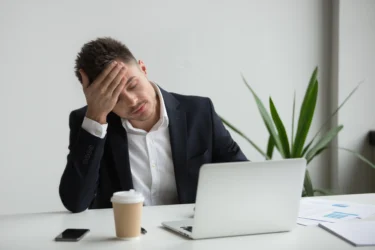
Anaemia can lead to shortness of breath, dizziness, tiredness, and irritability. The most common cause of anaemia is iron deficiency. Sitopaladi churna may help increase iron absorption by the body and thus helps in nutritional anaemia3. Further studies are needed to establish the claim of effect of sitopaladi churna for anaemia.
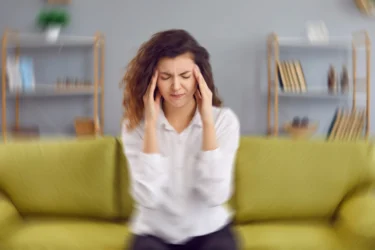
Sitopaladi churna combined with other herbal medications, along with modified diet and lifestyle modifications like 8 hours of proper sleep, 30-60 min of morning or evening walk, and abstaining from smoking and drinking proved to be effective in the management of migraine5. However these claims need further studies, you must consult a doctor for proper advice on migraines.
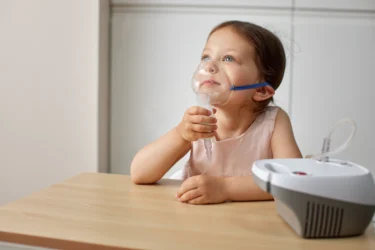
Sitopaladi churna may be helpful in conditions like fever related to flu, cold, chest congestion, pneumonia, tuberculosis, bronchitis, and other respiratory illnesses. This herbal preparation may help control respiratory infections due to its anti-inflammatory and antioxidant properties2. However, respiratory conditions may need medical supervision and diagnosis. Consult a qualified doctor for treatment of any respiratory condition.

Vocal nodules occur due to abuse or misuse of the vocal cords. Some professions require high-volume speech. This might lead to the formation of vocal nodules. Sitopaladi churna along with other herbal formulations may be used for managing vocal nodules. Studies show that it may give some relief from the symptoms and the person can regain their original voice6. But consult a doctor for advice before consuming sitopaladi churna on your own.
Though there are studies showing the benefits of sitopaladi churna in various conditions, these are insufficient. There is a need for further studies to establish the true extent of the benefits of sitopaladi churna on human health. Furthermore, every person may respond differently to these herbs. Therefore, it is important to consult a doctor before using sitopaladi churna for any medical condition.
In my opinion, when we combine the herbal product from Bambusa arundinacea found in sitopaldi churna with other medicines, it might create a powerful anti-inflammatory drug. It’s like a dream team for treating chronic inflammatory conditions like rheumatoid arthritis with peptic ulcers, which are quite common. This combination may also offer hope for long-term treatment and relief in the said conditions14.
Dr. Rajeev Singh, BAMS
Sitopaladi churna is available in two forms:
Sitopaladi churna can either be taken with honey, water or ghee10. One should always take the advice of an Ayurvedic physician before having sitopaladi churna. In addition, we recommend you do not replace or discontinue your ongoing medications with any ayurvedic or herbal preparations without seeking the medical advice of a qualified doctor. They will guide you with the best form and dosage in which the herb can be used per your health condition.
Also Read: Avipattikar Churna: Uses, Benefits, Side Effects and More!
There is not sufficient evidence for sideeffects of Sitopaladi churna and it may be safe when used by children and pregnant women. It is essential to consult an Ayurvedic physician and take only take prescribed doses3.
Also Read: Multani Mitti: Uses, Benefits, Side Effects & More!
Also Read: Ragi (Finger Millet): Health Benefits and Tasty Recipes for Losing Weight
Due to its kapha and vata dosha balancing qualities, sitopaladi churna might be helpful in the management of asthma symptoms. It helps to breathe easily by clearing the air pathways7,8. Every person may respond differently to these herbs. Therefore, it is important to consult a doctor before using sitopaladi churna for any medical condition.
Intercostal neuralgia is nerve pain right under you’re the ribs. There can be pain in the chest and upper back region. Sitopaladi churna may be helpful in the management of intercostal neuralgia9. It is however, important to consult a doctor before using sitopaladi churna for any medical condition.
The ingredients of sitopaladi churna are taken separately, crushed well to form a powder, and filtered through a clean cotton cloth. The ingredients are then mixed together to form a uniform mixture and then stored in an air-tight container10.
According to a case report Sitopaladi churna might be helpful in post-covid lung complications due to its affinity towards the respiratory system11. This may be followed under supervision and guidance of a qualified doctor.
Sitopaladi churna is also known by the names- sitopaladi choorna, sitopaladi choornam, sitopaladi chooran, etc12.
Yes, Sitopaladi Churna’s soothing properties can help ease the discomfort of a sore throat by reducing inflammation and providing relief from irritation. Mixing it with honey and consuming it may be beneficial for a sore throat.
Sitopaladi Churna is typically taken orally with honey or warm water. The dosage and frequency may vary depending on the individual’s age, condition and the Ayurvedic practitioner’s recommendation.
Sitopaladi Churna contains sugar candy, which may impact blood sugar levels. Individuals with diabetes should consult their healthcare provider or an Ayurvedic practitioner before using it and consider alternatives without sugar candy.
Sitopaladi Churna generally has a pleasant taste due to the combination of sweet and aromatic herbs like sugar candy and cardamom. Mixing it with honey or warm water can enhance its taste.
Ayurvedic practitioners often recommend taking Sitopaladi Churna after meals for better absorption and to avoid any potential discomfort on an empty stomach.
Disclaimer: The information provided here is for educational/awareness purposes only and is not intended to be a substitute for medical treatment by a healthcare professional and should not be relied upon to diagnose or treat any medical condition. The reader should consult a registered medical practitioner to determine the appropriateness of the information and before consuming any medication. PharmEasy does not provide any guarantee or warranty (express or implied) regarding the accuracy, adequacy, completeness, legality, reliability or usefulness of the information; and disclaims any liability arising thereof.
Links and product recommendations in the information provided here are advertisements of third-party products available on the website. PharmEasy does not make any representation on the accuracy or suitability of such products/services. Advertisements do not influence the editorial decisions or content. The information in this blog is subject to change without notice. The authors and administrators reserve the right to modify, add, or remove content without notification. It is your responsibility to review this disclaimer regularly for any changes.
Gokshuradi guggulu is an Ayurvedic aushadi (medicine) which is made by combining different herbs for their different potential properties. In ancient scriptures such as Sarangadhar Samhita, Gokshuradi Guggulu has been mentioned for the treatment of gout (vatarakta). Though it contains many herbs, its main constituents are Gokshura and Guggulu, lending it the name1.
Gokshura is the Hindi name of caltrops fruit. It is referred to as Palleru kaya in Telugu, Naggerimulu in Kannada, Pakhda in Kashmiri and Gokhru in Marathi. The whole plant might be utilised for its various potentially helpful properties1.
Guggulu is a name given to medicines where both the plant and its gum (oleo-resin) are used. Guggulu is mainly found in Rajasthan, Gujarat and Maharashtra and is a woody herb or a small tree. It also has various vernacular names like Guggal (Hindi), Mahishakshi gugglu (Telugu), and Guggal dhoop (Kashmiri). In English, it is called Indian Bdellium or Gum-guggul1.
One should not have misconceptions about its herbal nature merely because it is being commercially produced and is available in the market. It is an Ayurvedic preparation with potent herbs. You must consult a qualified Ayurvedic physician before consuming any herb for its benefits.
Did you know?
Gokshuradi Guggulu is a mixture of herbs. The individual components when mixed together accentuate each other’s properties and act as a single unit to produce an entirely different set of potential uses. The various herbs that constitute Gokshuradi guggulu are:
Gokshuradi guggulu, might have the following potential uses1:
Gokshuradi guggul may be potentially used for its benefits:

Gokshuradi Guggulu is mentioned in ancient scriptures as a treatment for gout (vatarakta). The increase of uric acid in the body leads to over-activation of the immune system. This leads to the production of cells which cause the destruction of our own healthy cells instead of any outside harmful agent. This leads to inflammation and pain.
The formulation of Gokshuradi Guggulu might potentially exhibit anti-inflammatory action and stop the over-activation of the immune system by decreasing uric acid levels. Thus, it might help to relieve the pain caused by gout.
Gokshuradi guggulu might help increase the blood circulation to the joint which is important for the removal of cells causing inflammation. Furthermore, it might be helpful for rheumatic pain which is also caused due to inflammation by the same mechanism mentioned above1. However, gout is a serious condition and must be diagnosed and treated by a doctor. Kindly consult a doctor and do not self-medicate.
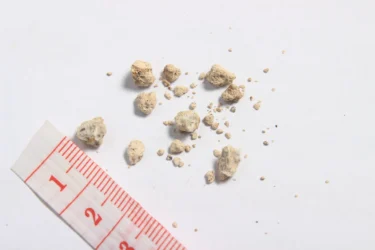
Stones may be formed in the urinary tract of the body due to various reasons; the scientific term for kidney stones is urolithiasis. As the stone formed blocks the flow of urine, there may be pain in the lower region of stomach (abdomen and umbilical region), pain during urination, blood in urine, etc. If this condition persists it may even lead to total obstruction of urine flow which can be quite dangerous and painful3.
In a recent study3 conducted in 2020, it was found that gokshuradi guggulu might help to relieve the pain during urination and pain in the lower part of the stomach (abdomen) and might even aid in expulsion of the kidney stone through urine. This may be because it contains herbs which might possess stone dissolving properties (lithotriptic properties). It may increase urine production and expulsion (diuretic) properties, as it might help with muscle spasm in the abdominal region and might act as an antiseptic (might be helpful against infections of urinary tract). Gokshuradi guggulu might enrich the blood and may be helpful against inflammation and irritation. One of the herbs present in gokshuradi guggulu, musta, might help stimulate the expulsion of the stone in the urine. However, more research is required to prove these claims. Therefore, kindly consult a doctor and ensure proper diagnosis and treatment of the condition. Do not self-medicate.
Did you know Gokshuradi Guggulu might be helpful in case of UTI (Urinary tract Infection)? Gokshuradi Guggulu has anti-oxidant and diuretic nature which makes it a potential drug in cases of Urinary Tract Infection.
Dr. Rajeev Singh, BAMS

The harmful effects of diabetes (high blood sugar) on the kidney are collectively called as diabetic nephropathy in medical terms. These effects on the kidney may be seen even in those patients with well-controlled blood sugar levels over the course of many years. It is a potentially life-threatening condition.
A study4 conducted by Kalapi Patel over 2 months on patients with diabetes showed that Ayurvedic preparations like gokshuradi guggulu might have a potential to help with diabetic nephropathy. In this study it was seen that it might help restore the blood flow to the kidney, thus might help in its proper nourishment and function2. It was seen that gokshuradi guggulu might also help reduce the occurrence of proteins in the urine (albuminuria)3. However, more research is required to prove such effects. Therefore, please consult a doctor as such conditions should be diagnosed and treated by a doctor.

Gokshuradi Guggulu might have antioxidant property, might act as a scavenger for free radicals and might help neutralise them. It might also protect the cells of the kidney from damage by ensuring proper blood flow to it1. However, more research is required to ascertain these uses of Gokshuradi guggulu. Kindly consult a doctor. Do not self-medicate.
Though there are studies that show the potential uses of gokshuradi guggulu in various conditions, these are insufficient and there is a need for further studies to establish the true extent of benefits of gokshuradi guggulu on human health.
Reduce prostate enlargement with Gokshuradi Guggulu! Researchers believe that due to its anti-inflammatory property, Gokshuradi Guggulu might be helpful in the case of Benign Prostate Enlargement in males5.
Dr. Siddharth Gupta, B.A.M.S, M.D (Ayu)
Gokshuradi Guggulu is commercially available in the form of tablets in the market. It is advised not to self-medicate without consulting a qualified Ayurvedic physician first.
You must consult a qualified doctor before taking any herbal supplements. Do not discontinue or replace an ongoing treatment of modern medicine with an ayurvedic/herbal preparation without consulting a qualified doctor.
Herbs may react differently in different people. More research is required to ascertain the side effects of gokshuradi guggulu. If you experience any reaction or side effect while consuming the herb you must reach out to doctors for help. It is not to be used without a prescription from a qualified physician.
A few general precautions are to be kept in mind:
Interaction with other drugs has not been fully explored yet. Therefore, there is a need for more studies on gokshuradi guggulu. If you are taking any kind of medication, your Ayurvedic physician will be a better judge and be able to guide you based on your health condition. Kindly consult your Ayurvedic physician and do not self-medicate.
Also Read: Guggul: Uses, Benefits & Side Effects
It is advised to consult your Ayurvedic physician for a proper prescription and dosage recommendation for your health condition.
Gokshuradi Guggulu is an Ayurvedic preparation containing many herbs, Gokshuradi and Guggulu being the predominant ones1.
Gokshuradi Guggulu might have anti-inflammatory and pain-relieving properties which might help with rheumatic pain1. However, more research is required to prove such claims. Please consult your Ayurvedic physician.
No. there have been no reports regarding the usage of Gokshuradi Guggulu for better concentration.
Gokshuradi Guggulu might have the potential to help with diabetes as it might help protect the kidney from damage caused by diabetes4. However, more research is required on this subject. Do not self-medicate. Kindly consult a doctor.
There have been no reports stating the beneficial effects of Gokshuradi Guggulu in lowering blood pressure.
It is advised to consult an Ayurvedic physician before consuming gokshuradi guggulu, especially for pregnant women and nursing mothers.
Gokshuradi Guggulu is used since ancient times to treat gout. It might help reduce inflammation and might have a pain-relieving effect too. Therefore, it might be helpful for the treatment of gout1.
There are no reports claiming the benefit of gokshuradi guggulu for hair.
Gokshuradi guggulu as a digestion-promoting agent has not been reported.
1. Kaur R, Goyal C, Chopra S, Singh R, Malik A. a Literary Review on Gokshuradi Guggulu With Special Reference To the Management of Gout. Int J Res Ayurveda Pharm. 2020;11(5):159–64. Available from: https://www.researchgate.net/publication/346691244_A_LITERARY_REVIEW_ON_GOKSHURADI_GUGGULU_WITH_SPECIAL_REFERENCE_TO_THE_MANAGEMENT_OF_GOUT
2. Evaluation P. FORMULATION. 2015;5:24–9. Available from: http://www.ijpra.com/File_Folder/24-29(ijpra).pdf
3. Sabbu Thasineku, Binod Kumar Singh, D.L.Bharkher, Sirjana Shrestha, Raj Kishor Shah, Shankar Gautam. The Effectiveness of Goksuradi Guggulu and Varunadi Kwath with Goksuradi Guggulu in the Management of Mutrasmari w.s.r. to Urolithiasis. Int J Res AYUSH Pharm Sci. 2021;463–9. Available from: https://www.researchgate.net/publication/349741544_The_Effectiveness_of_Goksuradi_Guggulu_and_Varunadi_Kwath_with_Goksuradi_Guggulu_in_the_Management_of_Mutrasmari_wsr_to_Urolithiasis
4. Patel K, Shah N, Gupta S. Effect of Ayurvedic management in 130 patients of diabetic nephropathy. AYU (An Int Q J Res Ayurveda). 2011;32(1):55. Available from: https://www.ncbi.nlm.nih.gov/pmc/articles/PMC3215418/
5. Bhalodia SG, Bhuyan C, Gupta SK, Dudhamal TS. Gokshuradi Vati and Dhanyaka-Gokshura Ghrita Matra Basti in the management of Benign Prostatic Hyperplasia. Ayu. 2012 Oct;33(4):547-51. doi: 10.4103/0974-8520.110532. PMID: 23723674; PMCID: PMC3665207. Available from: https://pmc.ncbi.nlm.nih.gov/articles/PMC3665207/
Disclaimer: The information provided here is for educational/awareness purposes only and is not intended to be a substitute for medical treatment by a healthcare professional and should not be relied upon to diagnose or treat any medical condition. The reader should consult a registered medical practitioner to determine the appropriateness of the information and before consuming any medication. PharmEasy does not provide any guarantee or warranty (express or implied) regarding the accuracy, adequacy, completeness, legality, reliability or usefulness of the information; and disclaims any liability arising thereof.
Links and product recommendations in the information provided here are advertisements of third-party products available on the website. PharmEasy does not make any representation on the accuracy or suitability of such products/services. Advertisements do not influence the editorial decisions or content. The information in this blog is subject to change without notice. The authors and administrators reserve the right to modify, add, or remove content without notification. It is your responsibility to review this disclaimer regularly for any changes.
Kutajarishta is a self-generated alcoholic formulation. The fresh stem bark of kutaja is the main ingredient of kutajarishta. It may be used for dysentery, diarrhoea, and other stomach-related conditions1. The ingredients of kutajarishta are kutaja (Holarrhena antidysenterica), guda (jaggery), Jala (water), draksha (Vitis vinifera), kashmarya (Gmelina Arborea), madhuka pushpa (Madhuka indica), and dhatakipushpa (Woodfordia fruticosa)2. In Bangladesh, kutajarishta has been widely used for conditions like sciatica, lumbago, and arthritic pain3.
Kutajarishta contains flavonoids, resins, steroidal alkaloids, tannins, ergosterol, saponin, coumarin, phenolic acids, and triterpenoids4.
Kutajarishta may have the following properties:
Kutajarishta may have potential uses for various ailments; however, more studies are required to provide its true scope in humans.

Kutajarishta may be used for the management of diarrhoea. The herb kutaja may have antidiarrhoeal properties. Diarrhoea occurs due to the excess motility of the gut and disturbed stomach emptying. The antidiarrhoeal property of kutaja may be due to its antiparasitic activity against the parasites G. lambia and E. hystolytica that cause diarrhoea1.
This information is insufficient and requires more human studies to support the potential uses of kutajarishta in diarrhoea. Therefore, people must consult their concerned doctors and only have it if prescribed.
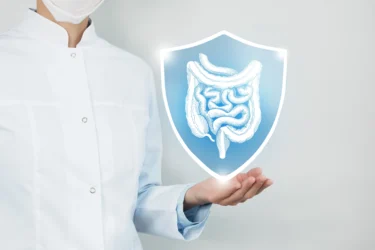
IBS is a chronic colon disorder characterised by diarrhoea or constipation, the passage of mucus in the stool, and cramping abdominal pain7. Kutajarishta may have anti-diarrhoeal, antisecretory, immunostimulatory, and antimotility effects; it may be widely used for managing irritable bowel syndrome1.
This data is insufficient, and further studies are required to suggest the potential use of kutajarishta to manage IBS in humans.
According to much research, Kutajarishta is a classical Ayurvedic medicine widely used in the management of irritable bowel syndrome, dysentery, and diarrhoea due to its effect on intestinal motility. It is also used to relieve sciatic pain1,3.
Dr. Rajeev Singh, BAMS

Dysentery is a disease characterised by severe diarrhoea with the passage of blood and mucus and is mostly caused by infection. Kutajarishta may be used to manage dysentery. Kutajarishta may have several beneficial activities like antidiarrhoeal, antimotility, immune-stimulatory, and antisecretory that might be helpful for dysentery1.
This information is preliminary; hence, more human trials of kutajarishta are needed to develop its scope on overcoming problems related to dysentery in humans.

Kutujarishta has been widely used in Bangladesh to manage sciatica (a condition affecting the sciatic nerve that causes pain in the lower back and legs), arthritic pain, and lumbago (pain in the joints and muscles of the lower back). In a study8 by D’Costa et al. 2012, kutajarishta was tested for its anti-inflammatory and pain-killing properties in animals. It may indicate the beneficial anti-inflammatory and pain-killing properties of kutajarishta that might be helpful for arthritic pain, sciatica, and lumbago3.
These studies are animal studies9 and might show different results when tried on humans. Therefore, we require more clinically tested proof on humans. So, it is necessary to take a doctor’s advice before using kutajarishta to manage inflammation and pain.
Though studies show the benefits of kutajarishta in various conditions, these are insufficient, and there is a need for further studies to establish the true extent of the benefits of kutajarishta on human health. In addition, every person may respond differently to this herb. Therefore, it is essential to consult a doctor before using kutajarishta for any medical condition.
You may take kutajarishta with water after a meal. You must always take kutajarishta after consulting your Ayurvedic doctor. In addition, we recommend you do not replace or discontinue your ongoing medications with any ayurvedic or herbal preparations without taking the medical advice of a doctor. They will tell you the best form and dosage in which this herb can be used according to your health condition.
From my experience, the best time to take Kutajarishta is after a meal. You should take Kutajarishta with water for maximum benefits1.
Dr. Siddharth Gupta, B.A.M.S, M.D (Ayu)
There is no major study reporting the side effects of kutajarishta. Hence, more human trials are required to suggest the side effects of kutajarishta on humans. But if you notice any side effects after consuming kutajarishta, you must report them to your doctor. They will prescribe you a better treatment to overcome those harmful effects.
Also Read: Karisalankanni (False Daisy): Uses, Benefits, Side Effects, and More!
While using any herbal product for its benefits one must follow general precautions and eat it in moderation. Moreover, if you want to use kutajarishta for its properties or against any disease conditions, talk to your doctor first. It will help you make well-informed choices and avoid unwanted health effects.
Also Read: Effective Home Remedies for Body Pain
There is no sufficient information on the interaction of kutajarishta with any medicine. However, it would help if you did not think that there is no interaction at all. Therefore, if you have any underlying conditions and are on any medication, you must consult your doctor before taking kutajarishta.
Also Read: Home Remedies for Loose Motion
There is not enough data available on the side effects of kutajarishta. However, you must notify your doctor if you notice any symptoms after taking kutajarishta. Therefore, it is important that you take kutajarishta after consulting your doctor.
Kutajarishta might be helpful for dysentery as it has certain beneficial activities like anti-diarrhoeal, antimotility, immune-stimulatory, and antisecretory that might benefit you in case of dysentery1. However, consult your doctor if you want to take kutajarishta to deal with dysentery.
Kutajarishta may be used for diarrhoea. It may be used and mostly shows its beneficial effect due to its anti-diarrhoeal and anti-parasitic activity1. Therefore, it might be helpful to you; however, it is better to consult your doctor before taking kutajarishta.
There is insufficient information on the safe usage of kutajarishta while breastfeeding. Therefore, it is advisable to consult your doctor if you want to use kutajarishta while breastfeeding.
Kutajarishta might be useful in diabetes. The primary ingredient of kutajarishta is kutaja, known for its anti-diabetic property. Kutaja was tested for antidiabetic activity in animals and was found to lower blood glucose levels in animals, as suggested by Divya et al., 20216. Therefore, it might be helpful in diabetes. However, its study in humans is needed to confirm its antidiabetic activity. Therefore, a doctor’s consultation is necessary and only taken if prescribed.
Kutajarishta may be used for dysentery, diarrhoea, IBS, diabetes, inflammation, arthritic pain, sciatica and lumbago (pain in the muscles and joints of the lower back)1,3,6. However, it is recommended that you consult an Ayurvedic practitioner before taking kutajarishta and not use it to self-medicate on your own.
No. It would be best to take kutajarishta after your doctor’s advice.
There is not much information on the safe usage of kutajarishta during pregnancy. Therefore, stay on the safer side and avoid kutajarishta during pregnancy.
There is sufficient data on the interaction of kutajarishta with any medicine. Therefore, it is advisable to use kutajarishta on your doctors’ advice. If you have any underlying conditions and are on any medication, there is are chance of a drug interaction.
Kutajarishta might be used for dealing with irritable bowel syndrome. It may have anti-diarrhoeal, antisecretory, immunostimulatory, and antimotility activity that might be responsible for managing irritable bowel syndrome1. However, it is better to consult your doctor before taking kutajarishta.
Kutajarishta contains kutaja, jaggery, water, draksha, kashmarya, madhuka pushpa, and dhatakipushpa1.
Kutajarishta is recommended by Ayurvedic practitioners/physicians for use, but it is essential to consult your Ayurvedic practitioner before taking kutajarishta1.
Disclaimer: The information provided here is for educational/awareness purposes only and is not intended to be a substitute for medical treatment by a healthcare professional and should not be relied upon to diagnose or treat any medical condition. The reader should consult a registered medical practitioner to determine the appropriateness of the information and before consuming any medication. PharmEasy does not provide any guarantee or warranty (express or implied) regarding the accuracy, adequacy, completeness, legality, reliability or usefulness of the information; and disclaims any liability arising thereof.
Links and product recommendations in the information provided here are advertisements of third-party products available on the website. PharmEasy does not make any representation on the accuracy or suitability of such products/services. Advertisements do not influence the editorial decisions or content. The information in this blog is subject to change without notice. The authors and administrators reserve the right to modify, add, or remove content without notification. It is your responsibility to review this disclaimer regularly for any changes.
Babool also called Acacia arabica, belongs to the family Leguminosae. Babool is a spiny, medium-sized, perennial tree commonly found throughout India1. The bark of the tree is known as Babur or Babul in Hindi. Today it is widely known as Gum Arabic as it was imported in large quantities in Arab. In India, babool is very commonly found in Maharashtra, Uttar Pradesh, Madhya Pradesh, Chhattisgarh, Jharkhand, Rajasthan and other dry regions of the country. Also, the thorny babool tree is seen in the neighboring Asian countries of Bangladesh, Sri Lanka, and Burma. It is native to North Africa and commonly seen in Egypt. It is more common in the western states of the peninsula. The vernacular names of babool are Babura, Kikar, Babula in Hindi Kaloabaval, Baval in Gujarati Babala, Babula in Oriya Babhula, Babhul in Marathi Babla in Bengali Babala in Assamese Indian gum Arabic tree, babula tree in English Kari Jail, Kari gobli, Sharmeeruka, Pulai Jali in Kannada Kikkar in Punjabi Sak in Kashmiri Thumma, Nallatumma in Telugu Karuvel, Karuvelan in Tamil Velutha Karuvelan in Malayalam Bavari, Kinkirata in Sanskrit1.
Did you know?
The seeds of babool contain rich amounts of fiber and proteins. Its pods contain more fiber and have a lesser amount of protein as compared to the leaves3. There are many nutritional benefits of babool, including tannin, alkaloids, a polyphenolic compound, terpenoids, glycosides, and saponins2.
The properties of babool include:
Recent studies suggest that the bark of Babool might be used as a natural dye for clothes. It is believed to bind dyes to the fabrics. This is fantastic news for those who love and enjoy wearing natural fabrics7.
Dr. Siddharth Gupta, B.A.M.S, M.D (Ayu)
Babool might have some potential uses in various conditions. However more studies are required. Some potential uses of babool are described as follows:

In a study, conducted by Crowch and Okello 2009 stated that babool had inhibitory activity on acetylcholinesterase enzyme. Acetylcholinesterase, an enzyme that breaks down the neurotransmitter acetylcholine, may be helpful in managing Alzheimer’s disease2. However, human studies are required to confirm its effectiveness on Alzheimer’s disease. Therefore it is essential first to consult a doctor and only use babool as a herb for Alzheimer’s.
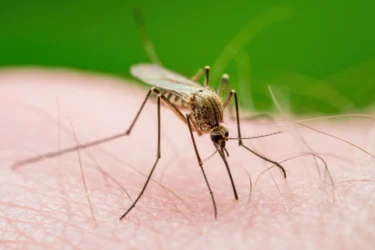
The water extract and ethyl acetate extract of babool was evaluated for antimalarial activity in an animal model by Malviya et al. 2011 and both exhibited antimalarial activity4. The extract of babool was found to have the highest anti-malarial activity against the malaria parasite Plasmodium falciparum. However, these studies are done on animals and not on humans. Therefore, we require more information on its safe usage on humans.
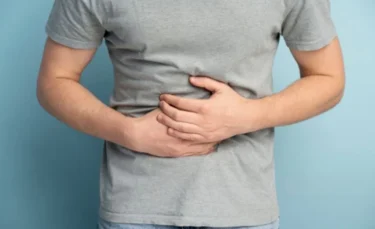
Babool may have shown anti-ulcer potential when tested on different animal models. The phenolic compounds present in babool might be responsible for the antiulcer activity2. In another study by Agunua et al. 2005, babool was tested for anti-diarrhoeal activity in animals. Initially, babool showed a relaxation effect followed by a contraction effect in the jejunum (middle part of the small intestine) of the animals. It also showed a 100% reduction from diarrhoeal infection in another animal model5. Therefore, it might indicate that babool may be beneficial for managing symptoms of diarrhoea. However, this research is insufficient as these studies are not done on humans. Hence, more studies on humans are required to suggest the potential use of babool for digestion. Therefore it is essential to first speak with your doctors and only use babool as a medicine.

Studies have seen the blood glucose-lowering activity of babool extract, in an animal model studied2 by Kharya et al. 2010. The results showed that the babool extract might have a blood glucose-lowering effect. It exhibited a reduction in blood glucose, triglycerides, and cholesterol. This means it may help lower the risk of heart disease as well. Diabetes is a major health condition and requires appropriate diagnosis and treatment from a professional doctor. Therefore, human trials of babool are necessary to provide its potential usage for managing blood sugar levels in humans.
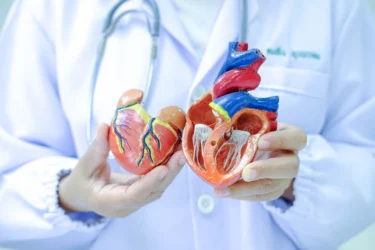
The antihypertensive activity of babool was tested in an animal model and humans (Gilani et al. 1999). The extract of babool was found to lower arterial blood pressure and give antihypertensive activity. In human studies2 conducted by Omaima et al. 2016, a drop in systolic and diastolic blood pressure was observed in participants with type 2 diabetes. This suggests that babool may be a potentially useful agent to lower blood pressure, especially in persons with diabetes5. However, these studies are insufficient and more new studies are required. Therefore, people should take advice from a doctor to stay updated about the latest benefits related to any herb.

A study2 by Kalaivani and Mathew 2010 reported that babool is a highly accessible source of natural antioxidants. It may be used in inflammation, cancer, and diabetes. The high antioxidant property of babool might be due to the phenolic compounds present in it. These antioxidants may fight the free radicals that are produced in the body. However, this information is insufficient and requires extensive research to support this claim.

The gum, flower, and leaf extract of babool were evaluated for anticancer activity in an animal model by Meena et al. 2006. Babool was found to affect tumor growth and showed a cytotoxic effect on cancer cells obtained from a human. In an animal study4, the use of babool was found to reduce tumor development. However, cancer is a serious health condition that might require proper treatment and diagnosis. So it is better first to have a consultation with a doctor. And more research is required to develop an accurate scope of babool for cancer-related problems in humans.

Babool was investigated for its weight management activity in a human study by Omaima et al. 20165. A highly significant decrease in BMI (body mass index) was seen in prediabetic and diabetic groups, implying that babool might benefit weight management. However, this study is insufficient we require more human studies to provide the true extent of babool for weight management in humans.

A study2 conducted by Banso et al. 2009 was done to evaluate the antimicrobial activity of babool. The study showed that the bark extract might have antimicrobial activity against bacteria like Staphylococcus aureus, Streptococcus viridans, Escherichia coli, Shigella sonnei, and Bacillus subtillis. This study suggested that babool extract might be a potential antimicrobial agent. In another study by Kalaivani et al. 2010, babool showed the highest activity against 2 fungi strains (Aspergillus niger and Candida albicans) and 3 bacterial strains (Salmonella typhi, S. aureus, and E. coli). Babool may also be known for its antiviral activity against the virus Hepatitis C in infected liver cells. However, this information is insufficient because these studies are not done on humans and require more studies to be done on humans to support the use of babool for managing infections in humans.

In a study5 by Eline et al. 2004, the extract of babool was found to enhance the production of milk in rats and was shown to increase the production by 59% in an hour. However, human studies are required to confirm its activity on humans to stimulate higher milk production in nursing mothers. Therefore lactating mothers need to be aware of the safe usage of babool during these times. Also a doctor’s consultation is essential.
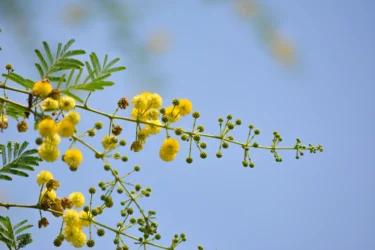
Prolapse means a displacement of an organ from its normal position. The decoction of babool bark may be used in rectal prolapse. The decoction of root bark may be used for stomach pain. The leave decoction is used in the form of nutool (a method of pouring the solution from a height over the specific part) in prolapse4. However, its effectiveness on humans requires more testing. However, more studies on humans are required to support the potential uses of babool for rectal prolapse. Therefore, a doctor’s advice is necessary.

The tender leaves of babool might be beneficial for treating mouth ulcers. It may be useful to clean the mouth, relieve pain, stop the bleeding of the gums, and might also help tighten the teeth5. However, its effectiveness requires confirmation via human studies. Therefore, people should consult their doctors and only use them to overcome the above-mentioned issue. Though there are studies showing the benefits of babool in various conditions, these are insufficient. And there is a need for further studies to establish the true extent of the benefits of babool on human health. Furthermore, every person may respond differently to these herbs. Therefore it is important to consult a doctor before using babool for any medical condition.
Spice up your life with your partner using Babool! Other than medicinal uses, Babool might be used as an aphrodisiac to enhance sexual life.
Dr. Rajeev Singh, BAMS
Babool can be used as:
One should always take the advice of an Ayurvedic physician before having babool. In addition, we recommend you do not replace or discontinue your ongoing medications with any ayurvedic or herbal preparations without seeking the medical advice of a qualified doctor. They will guide you with the best form and dosage in which the herb can be used per your health condition.
Did you know Babool might act as an expectorant as well? Researchers suggest that Babool might have the property to expel cough from the airways that might help to relieve the congestion.
Dr. Smita Barode, B.A.M.S, M.S.
Regular consumption of babool might have some side effects associated with stomach.
Having babool in moderation might be safe. However one must follow general precautions.
Also Read: Lemongrass: Uses, Benefits, Side Effects and More!
A review report (Ulbricht et al. 2008) suggested that babool was found to interact with amoxicillin (antibacterial medicine). It might affect the absorption of amoxicillin6. Therefore, avoid babool when you are taking amoxicillin. Thus, if you are taking antibacterial/antibiotic medicine, you must consult an Ayurvedic physician before consuming babool products. They will direct you to the better way to have it.
Babool in English is called an Indian gum Arabic tree1.
Babool can be used as powder or decoction1. Small bark, juice of babool leaves, and tender leaves can be used. The powder form of flower, leaves, bark, pod, and wood may be used for leucorrhoea. Chewing babool bark and a decoction of the bark may be useful in cough. The paste or juice of babool leaves may be applied to lower the swelling and redness of the eye4. However, babool should not be used as self-medication. It is essential to take the doctor’s advice; they will recommend you the best form and dosage based on your health condition.
Babool is considered safe but has a few side effects. It might cause constipation and maybe harmful to the rectum, intestine, and chest5. Therefore, before using babool, please consult with your doctors.
The small branches of babool may be beneficial for strengthening the teeth as they are used for brushing the teeth4. This fact is insufficient and requires a doctor’s advice to back this claim.
There is not much data on its usage during pregnancy. Therefore, be on the safer side and avoid babool during pregnancy or consult your doctor before taking babool during pregnancy.
Babool was found to be beneficial for diabetes in various animal models2. However, its study in humans is not reported. Therefore, more studies on humans are required. Diabetes is a severe health problem that must be accurately diagnosed and treated by a qualified doctor.
Chewing of bark and decoction of babool might be helpful in relieving cough4. But we require more information to suggest the usage of babool for managing cough. People should not use it to self-medicate on their own prior to consulting a doctor.
The tender leaves of babool might be helpful for mouth ulcers. It might also be used to clean the mouth, relieve pain, tighten the teeth, and reduce gum bleeding4. However, this information is insufficient to say the potential benefit of babool for mouth ulcers. You can consult a doctor before using it.
There is not much data on its safe usage during breastfeeding. Therefore, avoid babool during breastfeeding or consult your doctor before taking babool.
Babool was found to be beneficial for malaria in an animal model4. However, its effect on humans is still not studied. Therefore, more human trials are required to suggest the potential uses of babool in managing malarial infection.
Babool was found to interact with amoxicillin, as suggested in the review report (Ulbricht et al. 2008). Therefore, avoid babool if you are taking amoxicillin6. However, if any harmful effect is observed, please get in touch with your doctors.
Babool was found to have anti-ulcer properties when tested in an animal model (Bansal et al. 2012)2. However its study in humans is still not reported. Therefore, we require more studies on humans to confirm the beneficial effect of babool for ulcers.
A human study5 (Omaima et al. 2016) found babool to lower the BMI (body mass index) of prediabetic and diabetic patients. Therefore, it might be helpful to lose weight. However, this information is insufficient and requires more studies to back this claim. We recommend you should consult a doctor before using babool for weight management.
Disclaimer: The information provided here is for educational/awareness purposes only and is not intended to be a substitute for medical treatment by a healthcare professional and should not be relied upon to diagnose or treat any medical condition. The reader should consult a registered medical practitioner to determine the appropriateness of the information and before consuming any medication. PharmEasy does not provide any guarantee or warranty (express or implied) regarding the accuracy, adequacy, completeness, legality, reliability or usefulness of the information; and disclaims any liability arising thereof.
Links and product recommendations in the information provided here are advertisements of third-party products available on the website. PharmEasy does not make any representation on the accuracy or suitability of such products/services. Advertisements do not influence the editorial decisions or content. The information in this blog is subject to change without notice. The authors and administrators reserve the right to modify, add, or remove content without notification. It is your responsibility to review this disclaimer regularly for any changes.
Paneer dodi, scientifically called Withania coagulans, is a small bushy shrub from the Solanaceae family. It is commonly known as ‘paneer dodi’ or ‘Indian cheese maker’ because the fruits of this plant have milk-coagulating properties, and therefore, it is called paneer dodi. Traditionally, different parts of the plant, mainly the fruit, were used as a magic healer for some health conditions1.
Paneer dodi is found in the eastern Mediterranean region and spreads to Southern Asia. It is most commonly found in drier areas of Haryana, Punjab, Rajasthan, and Gujarat in India. In folk (traditional) medicine, various parts of this plant, mainly fruits, are valued for their therapeutic potential1.
The local/regional names of paneer dodi are Panir, Khamjaria, Khamjira in Punjab; Asvagandha in Bengal; Kaknaj in Bombay; Asgandha in Gwalior; Punirband, Punirjafota in Sindhi; Panneru-gadda in Telugu; Hab kaknaj in Urdu; Punirbad, Kaknajehindi in Persian; Kaknajehindi, Javzulmizaja in Arabic; and Asvagandhi in Canares2.
In folk medicine, paneer dodi has been used for conditions such as chronic liver ailments, dyspepsia (indigestion), flatulent colic (severe stomach pain due to gas), asthma, intestinal infections, biliousness (poor digestion and excess gas), and strangury (slow, painful urination)2.
The plant is rich in carbohydrates, free amino acids, alkaloids, tannins, steroids, esterase, phenolic compounds, organic acids, essential oil, fatty oil, and free sugar1,2.
I recently read an article suggesting6 that Paneer dodi contains withanolides, which have been shown to have anticancer activity, and flavonoids, which may have antimutagenic and anticarcinogenic properties. This property may help with cancer.
Dr. Siddharth Gupta, B.A.M.S, M.D (Ayu)
The flowers and fruits of paneer dodi are often used in folk medicine to manage diabetes5. In an animal model2 with type 2 diabetes, paneer dodi was discovered to improve signs and symptoms while achieving normal blood glucose levels during the trial. Therefore, you may use paneer dodi for managing blood glucose levels. However, you need to talk to your doctor before using paneer dodi or other herbs to manage your symptoms. Also, avoid using herbal supplements as an alternative to modern medicine.
Fruit extract of paneer dodi has been shown to exert liver-protective effects during laboratory trials. The protective effect of paneer dodi was determined by measuring the blood enzyme levels during the study4. if you are suffering from any liver condition, you need to consult with a doctor first before using paneer dodi for your liver. Using an herbal supplement without consulting your doctor may worsen the situation.
Fruit extract of paneer dodi was studied3 in an animal model for its diuretic effect. The results showed an increase in the urine volume and electrolyte excretion, indicating that the fruit extract has a diuretic effect. However, avoid using paneer dodi for its health effects without consulting your doctor. A doctor can give you a proper diagnosis and treatment.
In an animal study3, the fruit extract of paneer dodi was applied to the wound of an animal. In this study, the extract increased the rate of wound healing (wound contraction). This indicates that paneer dodi has wound-healing properties. If you are suffering from wounds, do not use paneer dodi without consulting your healthcare provider. Likewise, the wound might get infected if you use herbs without consulting your doctor.
Fruit extract of paneer dodi was evaluated in a study for its antibacterial activity. It was found to show antibacterial activity against Vibrio cholera and Staphylococcus aureus. It also showed anti-helminthic activity. Furthermore, the entire plant extract exhibited antifungal activity against several potentially pathogenic fungi3. These properties have been observed in lab trials. However, more research is needed to consolidate the use of paneer dodi on humans. Therefore, you are advised not to use paneer dodi for any infection without consulting a healthcare provider first.
The twigs may be chewed to clean teeth, while the plant’s smoke may be inhaled to relieve toothaches3. The seeds may be helpful in lumbago (muscle and joint pain in the lower back), eye inflammation, and piles. The fruits might be used for asthma, strangury, and biliousness and can be applied to wounds. In addition, the ripe fruits might possess sedative (induce sleep) or pain-killing properties2. However, if you are suffering from any of these health conditions, you need to reach out to a doctor or healthcare provider and get treated properly. Using any herbal remedy without consulting a doctor might worsen the situation.
Though some studies show the benefits of paneer dodi in various conditions, these are insufficient, and there is a need for further studies to establish the true extent of paneer dodi on human health.
In my experience, Paneer dodi may help in relieving menstrual problems. Research7 suggests that due to its anti-inflammatory properties, Paneer dodi stimulates normal menstrual flow and may therefore relieve any problems associated with periods.
Dr. Rajeev Singh, BAMS
Paneer dodi is used in the form of:
You must consult a qualified doctor before taking paneer dodi or herbal supplements. Further, do not discontinue or replace an ongoing treatment of modern medicine with an ayurvedic/herbal preparation without consulting a qualified doctor.
Also Read: Peanuts: Uses, Benefits, Side Effects and More
There are no side effects reported for paneer dodi. However, you should consult your doctor before taking panner dodi1.
Also, avoid using paneer dodi or any other herbal supplement without consulting your doctor first. It will help you avoid any unwanted side effects.
Also Read: Ashwagandha: Uses, Benefits & Side Effects
Also, you must talk to your healthcare provider before using any herb against disease conditions. They will be able to guide you better about the possible precautions of that herb.
Also Read: Raw Mango: Uses, Benefits, Side Effects By Dr. Smita Barode
No scientific data is available on the interaction of paneer dodi with other drugs.
However, if you are taking medication for any disease, make sure you talk to your healthcare provider about the possible interactions of the medicine with herbs and other drugs. Also, avoid using paneer dodi as medicine without consulting a doctor first.
You should talk to your doctor about the dosage and how long you can eat paneer dodi. Do not use any herbs or supplements without consulting your doctor first.
In some studies2, the berries have shown blood-purifying properties. However, more studies are required to justify its use in humans. You are advised not to use paneer dodi or any other herb for its health benefits without consulting your doctor.
You must consult your doctor before taking paneer dodi during pregnancy. Do not take any herb or supplement without consulting your doctor when you are pregnant.
Paneer Dodi can be used in the form of powder. Its twigs, leaves, and seeds can also be used. The fruit and flower can be used as a whole2,3,5. However, consult with a doctor first, as they will be able to guide you about the dosage and limitations of paneer dodi.
Paneer Dodi was found to have wound-healing qualities, according to animal research3. However, its study on humans for wound healing activity is yet to be documented. Therefore, you are advised not to use paneer dodi before consulting your healthcare provider.
The flowers and fruits of paneer dodi are commonly used to manage diabetes in folk medicine5. In an animal2 study, paneer dodi was tested for its activity on diabetes and was found beneficial for type 2 diabetes. However, the study in humans has not yet been reported. Therefore, if you have diabetes, do not use paneer dodi or any supplement without consulting your doctor.
No, there are no side effects reported for paneer dodi1. But you must consult your doctor before taking panner dodi.
The leaves and fruits of paneer dodi have unique natural coagulant properties for making curd.. A small piece is rubbed with a bit of milk or water and is added to the milk for curdling2.
An animal study4 found that the fruit extract of this plant possesses liver-protective properties. However, its liver protective property has not yet been reported in humans. If you are suffering from liver ailments, avoid using paneer dodi without a doctor’s consultation.
The wood of the plant is used to clean teeth. The smoke from the plant can be inhaled to relieve toothaches, and the twigs are chewed to clean teeth2. If you suffer from teeth problems, make sure to see your dentist. Using herbal remedies without talking to your doctor can worsen the situation.
The seeds of paneer dodi may aid in reducing the inflammation of piles2. However, do not use paneer dodi without talking to your doctor first.
There is no sufficient data available on the interaction of paneer dodi with other medicines. However, you must consult your doctor if you are taking any medication.
Disclaimer: The information provided here is for educational/awareness purposes only and is not intended to be a substitute for medical treatment by a healthcare professional and should not be relied upon to diagnose or treat any medical condition. The reader should consult a registered medical practitioner to determine the appropriateness of the information and before consuming any medication. PharmEasy does not provide any guarantee or warranty (express or implied) regarding the accuracy, adequacy, completeness, legality, reliability or usefulness of the information; and disclaims any liability arising thereof.
The peepal tree is considered the mythical ‘Tree of Life’ or ‘World Tree’ in the Indian subcontinent. It is also called Ficus religiosa, belonging to the family Moraceae, and is a variation of the fig tree known as the bodhi tree. The word ‘Ficus’ in Latin refers to ‘fig’, the fruit of the tree, and the word ‘Religiosa’ refers to ‘religion’, as it is sacred in both Buddhism and Hinduism1. Also, for this reason, it is named ‘Sacred fig’. It is a huge tree often planted near holy places and temples.
The vernacular names of peepal trees are Pipal, Pipala in Hindi; Jari, Piplo, Pipalo, Piparo in Gujarati; Pimpal, Pipal, Pippal in Marathi; Ashud, Ashvattha, Asvattha in Bengali; Aswatha in Oriya; Ahant in Assamese; Pippal, Pipal in Punjabi; Ravichettu in Telugu; Arara, Arasu, Arasan, Ashwarthan, Arasamaram in Tamil; Ranji, Arlo, Basri, Ashwatha, Ashvatthanara, Aralegida, Aralimara, Basari, Ashvathamara, Ashvattha in Kannada; Arayal in Malayalam; Bad in Kashmiri.
Traditionally, the leaf juice of the peepal tree may be helpful for cough, asthma, diarrhoea, ear pain, toothache, haematuria (blood in urine), migraine, scabies, eye troubles, and gastric problems. The stem bark of the peepal tree might help with paralysis, gonorrhea, bone fractures, diarrhoea, and diabetes. However, more studies are required to prove the potential use of benefits for the purposes mentioned above. Furthermore, it should not be used for self-medication.
The nutritional composition of parts of the peepal tree (per 100 g) is3:
| Nutrient | Fresh Fruits | Dried Fruits | Leaves | Bark |
| Carbohydrates | 21.2 g | 68.33 g | 19.20 g | 15.4 g |
| Proteins | 2.5 g | 8.48 g | 13.55 g | 2.5 g |
| Fats | 1.7 g | 0.143 g | 2.5 g | 1.7 g |
| Crude fibre | 9.9 g | – | 26.1 g | 9.9 g |
| Dietary fibre | – | 69.43 g | – | – |
| Calcium | 289 mg | 848 mg | 1.67 mg | 16.1 mg |
| Iron | – | 6 mg | 0.18 mg | 623 mg |
| Copper | – | – | 0.105 mg | – |
| Manganese | – | – | 0.355 mg | – |
| Zinc | – | – | – | 0.09 mg |
In my practice, I have observed that the methanolic extract of Peepal stem bark has shown an inhibitory effect on the enzyme acetylcholinesterase. Since this enzyme is responsible for the metabolism of the chemical acetylcholine. This suggests that it may have potential benefits in the treatment of Alzheimer’s disease by increasing levels of the neurotransmitter acetylcholine in the brain, which is important for memory and cognitive function5.
Dr. Rajeev Singh, BAMS
The Peepal tree might have the following therapeutic properties2:
Peepal trees might have the following potential uses for human health:
However, more studies are required to prove such claims. Kindly ensure that you consult a doctor as such conditions should be diagnosed and treated by a doctor.
However, more research is required to prove the use of peepal trees for the heart. Conditions of the heart are serious. Therefore, you should consult a doctor. Only a doctor should diagnose and treat heart diseases.
Kindly do not use it for self-medication.
However, more studies are required to prove such claims. Kindly ensure that you consult a doctor as such conditions should be diagnosed and treated by a doctor.
However, more research is required to prove the potential uses of peepal trees for the skin. Therefore, kindly consult a doctor.
However, more research is required to prove such claims. Therefore, you should consult a doctor.
However, make sure that you consult a doctor before putting anything in your ear. Please do not self-medicate. Kindly consult a doctor as ear problems can be serious.
Though there are studies that show the potential uses of peepal trees in various conditions, these are insufficient and there is a need for further studies to establish the true extent of the benefits of peepal trees on human health.
In my experience, I have observed that Ficus religiosa latex has shown hepatoprotective effects in cases of liver injury induced by cisplatin. It helped in reducing the elevated levels of liver enzymes and improving the liver cell degeneration, inflammation, and necrosis. This suggests that Ficus religiosa latex may have potential benefits in protecting the liver from drug-induced damage5.
Dr. Smita Barode, B.A.M.S, M.S.
Peepal tree can be used as:
You must consult a qualified doctor before taking any herbal supplements. Do not discontinue or replace an ongoing treatment of modern medicine with an ayurvedic/herbal preparation without consulting a qualified doctor.
Also Read: Soya Chunks: Uses, Benefits, Side Effects By Dr. Smita Barode
There is a need for more research to ascertain the potential use and side effects of peepal trees. It might have unknown side effects. Therefore, it is advised to consult your doctor before taking parts of the peepal tree.
Based on my experience, I have observed that the methanolic extract of Ficus religiosa bark may exhibit a potent anti-parasitic effect. This anti-parasitic effect of the methanolic extract of Ficus religiosa bark may be attributed to the presence of bioactive compounds within the extract. These compounds are likely to have properties that are toxic or detrimental to the parasites, leading to their lethality5.
Dr. Siddharth Gupta, B.A.M.S, M.D (Ayu)
General precautions should be followed before taking parts of the peepal tree, especially by pregnant women, breastfeeding mothers, children, and elderly individuals. Therefore, before taking the powdered bark or any other part of the tree, it is advisable to consult your doctor. Kindly do not self-medicate, alter, replace, or discontinue any ongoing treatment by yourself.
Also Read: Coconut Milk: Uses, Benefits, Side Effects and More!
Parts of the peepal tree might have unknown interactions with drugs. There is insufficient data regarding interactions with other drugs. Therefore, there is a need for more studies to be conducted. You should consult a doctor before using parts of the peepal tree for its benefits. You should also ensure to disclose the current medications being used so that the doctor can have a clear picture and provide accurate guidance.
Also Read: Plums (Aloo Bukhara): Uses, Benefits, Side Effects & More!
The powdered bark of the peepal tree may be applied with sesame oil for dealing with wounds if suggested by an Ayurvedic physician. Also, its stem bark can be boiled in water, and the lukewarm decoction may be used in infected and non-infected wounds, as it might help in healing. The root bark fine powder of the peepal tree may be used for dusting over the oozing lesion to manage it. However, these methods are not to be used without the prescription and consultation of an Ayurvedic physician.
Fresh latex of the peepal tree might help with hyperpigmentation of the face. However, more studies are required to prove the use of peepal trees for hyperpigmentation. Moreover, ensure that you consult a doctor before using it.
The powder from the dried fruit mixed with water might be helpful for asthma. However, more studies are required. Asthma is a serious condition and should be diagnosed and treated by a doctor. Therefore, kindly ensure that you consult a doctor.
A cold infusion or decoction of the bark might have potential use for healthy gums and might help with toothache. However, it is not advisable to use herbs on your own as the studies available are insufficient to suggest their benefits to humans. Kindly consult a dentist.
There is insufficient data regarding this subject. Kindly consult a doctor and do not self-medicate.
The fruits of the peepal tree might be helpful for constipation. Kindly consult a doctor and do not self-medicate.
The leaves of the peepal tree may be coated with ghee, warmed, and applied over the inflamed area of mumps; this may or may not be helpful. It should not be used without the recommendation of an Ayurvedic physician. Kindly consult a doctor for the diagnosis and treatment of mumps. Do not self-medicate.
The peepal tree is called ‘Sacred fig’ because it is believed to be sacred by the followers of Hinduism, Buddhism, and Jainism.
There is insufficient data regarding the use of peepal tree parts during pregnancy. Therefore, you must consult your doctor before taking it.
It can be used as powdered dried leaves, powdered dried bark, raw leaves juice, dried fruit or decoction of bark. However, you should not use it without the consultation of a doctor. Therefore, make sure that you consult a doctor.
Disclaimer: The information provided here is for educational/awareness purposes only and is not intended to be a substitute for medical treatment by a healthcare professional and should not be relied upon to diagnose or treat any medical condition. The reader should consult a registered medical practitioner to determine the appropriateness of the information and before consuming any medication. PharmEasy does not provide any guarantee or warranty (express or implied) regarding the accuracy, adequacy, completeness, legality, reliability or usefulness of the information; and disclaims any liability arising thereof.
Ashwagandha (Withania somnifera) is a popular herb in the Ayurvedic system of medicine. It is a small shrub that belongs to the Solanaceae family. It might be useful for different diseases and mostly as a nervine tonic (has a soothing effect on nerves). Ashwagandha is commonly called Indian Ginseng or Indian winter cherry. Ashwagandha is known for its rasayana (tonic) property. Rasayana is a herbal or metallic formulation that stimulates a youthful physical and mental state of health as well as happiness1.
Ashwagandha is cultivated in dry regions of South Asia, Africa, and Central Asia. More than 50 chemical constituents have been isolated from different parts of the ashwagandha plant1.
Did you know?
In 100 grams of ashwagandha, the nutrients found are:
The potential properties of ashwagandha are2:
Ashwagandha is also called an ‘adaptogenic’ herb or a ‘royal’ herb since it helps reduce stress and helps your body adapt to changes. It rejuvenates various body systems like the immune, reproductive and endocrine systems9.
Dr. Siddharth Gupta, B.A.M.S, M.D (Ayu)
The potential uses of ashwagandha for human health are as follows:
Ashwagandha might have anxiolytic (anxiety-relieving) properties that are similar to that of the drug lorazepam. Both ashwagandha and lorazepam showed to help reduce anxiety in animal models. Ashwagandha might also exhibit potential antidepressant properties. This indicates that Ashwagandha might help with depression and anxiety1. However, more research is required. Anxiety and depression may need serious attention and one should seek medical help from a professional for it.
Ashwagandha might have potential anti-arthritic properties that may be widely accepted and reported. Ashwagandha might help relieve pain by soothing the nervous system. In an experimental study6, patients were given a formula containing ashwagandha. This herbal formulation showed the potential to reduce the severity of pain and disability1,4. However, arthritis is a serious condition and must be diagnosed and treated by a doctor.
Ashwagandha is a popular Ayurvedic rasayana and belongs to medhyarasayanas, a subgroup of rasayanas. Medhya means mental/intellectual ability. Ashwagandha might help enhance memory and intelligence. This potential of ashwagandha for cognition was seen in children with compromised memory and old age as anecdotal evidence1. However, such claims lack scientific backup. Therefore, more research is required.
The circulatory system and cardiovascular health are adversely affected due to mental stress. Stress also affects the body’s antioxidant defence system7. Ashwagandha might help the body adapt to stress. It may also be effective in improving mental and physical health5. However, more research is required to ascertain such claims.
In a study8, treatment with an aqueous extract of ashwagandha showed potential to increase the pain threshold (a point beyond which a trigger produces pain) compared to that of placebo, showing that ashwagandha might be an analgesic agent. However, further research is required to state these as concrete facts.
Ashwagandha might help deal with problems related to sleep and may contain sleep-inducing properties. It might also help one fall asleep faster and have an improved sleep quality7.
Though there are studies that show the potential uses of ashwagandha in various conditions, these are insufficient and there is a need for further studies to establish the true extent of the benefits of ashwagandha on human health.
Ashwagandha may be helpful in combating hair loss and promoting hair growth. Hair loss usually occurs due to stress. The lactones present in ashwagandha can reduce the levels of cortisol hormone in the body, which relieves stress10.
Dr. Anuja Bodhare, B.A.M.S, M.D (Ayu)
The important formulations of ashwagandha include:
It is also available in the form of tea, pills, gummies, or tincture. The roots, seeds, leaves, and flowers of ashwagandha can be used for medicinal purposes.
You must consult a qualified doctor before taking any herbal supplements. Do not discontinue or replace an ongoing treatment of modern medicine with an ayurvedic/herbal preparation without consulting a qualified doctor.
Did you know ashwagandha contains high levels of polyphenols, mainly catechin, which is responsible for its antioxidant actions? All the parts of ashwagandha, including the roots, leaves and fruits, are rich in catechin, which provides potential health benefits12.
Dr. Smita Barode, B.A.M.S, M.S.
The safety of the long-term use of ashwagandha has not been fully documented. However, the most common side effects of ashwagandha are:
The less common side effects are:
Also Read: Shilajit: Uses, Benefits & Side Effects By Dr. Anuja Bodhare
Ashwagandha might also cause liver damage. It is essential to call your healthcare provider when you experience any side effects, particularly those consistent with liver damage like itchy skin or jaundice7. Therefore, kindly consult an Ayurvedic physician before using ashwagandha. They will tailor the prescription according to your health needs.
Ashwagandha may be helpful in improving the performance of swimmers as it boosts stamina. It is possible that the duration that can be covered by swimmers taking ashwagandha is longer than those not taking it1.
Dr. Ashok Pal, B.A.M.S.
Ashwagandha must be avoided in some conditions like:
Kindly do not self-medicate, alter, replace, or discontinue any ongoing treatment. Please consult a doctor.
Ashwagandha is derived from two words: ashwa, meaning ‘horse’ and gandha, meaning ‘smell’. It is named so because the fresh roots of ashwagandha emit the smell of a horse. It is believed to boost vitality and strength in your body, comparable to a horse11.
Dr. Rajeev Singh, BAMS
It is essential to take precautions when using ashwagandha with:
To make sure that ashwagandha does not interfere with other medications, it is essential to consult your physician4.
Also Read: Arrowroot Powder: Uses, Benefits, Side Effects By Dr. Smita Barode
Ashwagandha is a well-known herb used in Ayurvedic medicine. Its common names include winter cherry and Indian ginseng. It is obtained from a small evergreen shrub known as Withania somnifera. Ashwagandha might be helpful for a wide variety of ailments7.
In India, ashwagandha is cultivated in Uttar Pradesh, Gujarat, Rajasthan, Punjab and Madhya Pradesh4.
The decoction of the roots of ashwagandha might be helpful for colds and chills. The root bark might be helpful for asthma4. Kindly do not self-medicate. Consult a doctor before taking ashwagandha for the common cold.
In Ayurvedic medicine, the root of ashwagandha is used as an anti-inflammatory agent by an Ayurvedic physician for dealing with tumours, swellings, scrofula (a type of tuberculosis), and rheumatoid arthritis (a condition affecting joints and bones)4. However, you are advised not to use ashwagandha for the above-mentioned conditions by yourself. Kindly consult an Ayurvedic physician for the same.
Ashwagandha is indicated in conditions like syncope (temporary loss of consciousness associated with insufficient blood flow to the brain), piles, tumours, cervical lymphadenitis (enlargement of neck lymph nodes), gout (a type of arthritis), diseases of the skin, vitiligo (a disorder that causes the skin to lose color), lockjaw, heart failure, abscesses (a painful collection of pus), stiffness of the knee, cachexia (muscle and weight loss), bone fracture and diabetic carbuncle (cluster of painful boils)4. Kindly consult a doctor. Do not self-medicate.
Ashwagandha, an adaptogenic herb, is known to reduce stress, boost immunity, improve cognitive function, and enhance overall vitality. Its active compounds may help regulate cortisol levels, promote relaxation, and support physical endurance, making it a popular choice in traditional medicine and wellness practices.
The recommended dosage of ashwagandha typically ranges from 300 mg to 600 mg per day for most adults, divided into two or three doses. However, it’s crucial to consult with a healthcare professional to determine the appropriate dosage based on individual health factors and specific needs.
While ashwagandha is generally not associated with weight gain, some studies suggest it may support weight management by reducing stress-related overeating and regulating cortisol levels. However, individual responses may vary, and it’s advisable to consult with a healthcare provider before incorporating ashwagandha into a weight management regimen.
Ashwagandha has been studied for its potential to increase testosterone levels in men with low levels or infertility issues, attributed to its ability to reduce stress and improve overall hormonal balance. While research shows promising results, individual responses may vary, and consulting with a healthcare professional is advisable before using ashwagandha for this purpose.
Disclaimer: The information provided here is for educational/awareness purposes only and is not intended to be a substitute for medical treatment by a healthcare professional and should not be relied upon to diagnose or treat any medical condition. The reader should consult a registered medical practitioner to determine the appropriateness of the information and before consuming any medication. PharmEasy does not provide any guarantee or warranty (express or implied) regarding the accuracy, adequacy, completeness, legality, reliability or usefulness of the information; and disclaims any liability arising thereof.
Metals have been used in Ayurveda and other Indian medical systems since ages, but they were also widely used in Chinese and Egyptian civilizations in 2500 B.C. Bhasma is an Ayurveda metallic mineral preparation prepared with herbal juice or decoction and then exposed for Ayurvedic purposes. A Bhasma is ash created by burning the original material goes through an extensive purification process, followed by the reaction phase, which involves the addition of various minerals and/or herbal extracts1. In general, the medicinal indications of Swarna/gold can be found in almost all ancient medical classics, such as the Charak Samhita (1500 BC), Sushruta Samhita (1000 BC), and Astang Hridaya (400 AD). Around the fourth century, the creation of Rasa Shastra began, and from then on, Swarna has been dealt with comprehensively in Rasa Shastra texts, with masterstrokes of its pharmaceutics and therapeutics. Swarna is the most outstanding of all metals, and it is classified as part of the Sara loha group, which means ”essence” or a noble metal. Tuberculosis, anemia, cough, debility, sterility, and muscular dystrophy have all been treated with the calcined form (Swarna Bhasma). Moreover, it is thought to be the best rejuvenator because it promotes longevity and prevents aging2.
It demonstrates different therapeutic activities like:
The tiny gold particles in Swarna Bhasma, measuring approximately 28-35 nm, have a unique ability to reach the affected areas when taken orally. This may allow for the continuous release of gold particles which is necessary for the desired beneficial effects4.
Dr. Rajeev Singh, BAMS

Swarna Bhasma is a free radical scavenger, which means it consumes and removes free radicals from the body. Several proteins and enzymes in our body help to minimize the production of reactive oxygen species (O2, OH, H2 O2, and so on). After oxidative assault with acetic acid, two essential enzymes, superoxide dismutase (SOD) and catalase were assessed in two groups, Swarna Bhasma treated and control animals, blood or liver homogenate. Swarna Bhasma increased SOD activity (267 percent in serum SOD and 75.8 percent in liver homogenate, compared to the corresponding controls) and catalase activity (80 percent compared to control hemolysate). This could be linked to the patient’s improved pathophysiological status as well2. Via this free radical scavenging activity, it acts as an antioxidant and reduces inflammation.

Traditional gold preparations used in Ayurveda and Unani medicine had anxiolytic, anti-depressive, and anticataleptic properties with a large margin of safety. In a study2, treated animals showed a decrease in immobility time in the forced swimming test. They demonstrated a reduction in haloperidol-induced seizure scores.

The analgesic effects of Ayurvedic Swarna Bhasma, a calcined gold preparation, have been examined in various animal studies. Swarna bhasma was found to have analgesic efficacy in mice when tested using chemical, thermal, electrical, and mechanical methods. Swarna bhasma is thought to have opioid-like action which reduces pain2.
Swarna Bhasma is traditionally regarded as a valuable formulation that may help manage insomnia and promote better sleep5.
Dr. Siddharth Gupta, B.A.M.S M.D (Ayu)

To assess brain damage due to poor blood supply and its alterations, various enzyme parameters were used. Ayurvedic Swarna Bhasma significantly restored altered values to near-normal levels. This implies that gold preparations may have potential in cerebrovascular disorders2.
Experience the golden secret to a sharper mind and a resilient body with Swarna Bhasma! Studies state that by taking a small dose over time, this remarkable remedy might enhance memory and immunity7.
Dr. Smita Barode, B.A.M.S M.S.
Gold has long been recognised for its antibacterial properties and its ability to modulate the immune system. However, when combined with honey and clarified butter, its effects may expand even further. This powerful combination might increase the scope of its effects to activate immune cells within the body7.
Dr. Anuja Bodhare, B.A.M.S M.D (Ayu)
Swarna Bhasma is believed to possibly enhance the potentiality. This traditional remedy may also contribute to a glowing complexion6.
Dr. Ashok Pal, BAMS
Also Read: Ashwagandharishta: Uses, Benefits, Side Effects & More!
In patients with rheumatoid arthritis, the effect of gold salt treatment has been investigated. When rheumatoid arthritis patients who were already receiving gold therapy were compared to those who had previously been treated or those who had never had this therapy, lower synovial fluid substance P levels (an inflammation related chemical) were seen, though not statistically significant2. Thus, use of Swarna bhasma in arthritis is not proven.
Use of Swarna bhasma suppressed production of a chemical called prostaglandin in vitro. In addition, in vitro, gold inhibited two human skin epidermis enzymes. These findings point to several potential mechanisms for gold’s impact in skin conditions like pemphigus with actions like disruption of the inflammatory cycle and inhibition of skin enzymes implicated in blister production2.
There are at least three types of gold-induced side effects: painful neuropathies i.e. nerve pain which are sometimes accompanied by sleeplessness and anxiety; peripheral neuropathy, i.e. damage to peripheral nerves of the limbs; and encephalopathy, including symptoms such as melancholy and psychosis2.
Gold nanoparticles cling to cancer cells. They sparkle and are excellent at dispersing and absorbing light. This helps in quicker detection of cancer cells using gold. Epidermal Growth Factor (EGF) is a protein found in many cancer cells. They have Growth Factor Receptor (EGFR) all over their body. Usually, healthy cells do not usually express the protein in the same way2.
Immunoglobulin-secreting cells are inhibited by gold. The activation of different complement pathways is inhibited by gold. Swarna bhasma inhibits numerous immune responses to antigens. The extent of gold’s immunoregulatory effects is unknown, and the relationship between these effects and its therapeutic properties is uncertain2.
Disclaimer: The information provided here is for educational/awareness purposes only and is not intended to be a substitute for medical treatment by a healthcare professional and should not be relied upon to diagnose or treat any medical condition. The reader should consult a registered medical practitioner to determine the appropriateness of the information and before consuming any medication. PharmEasy does not provide any guarantee or warranty (express or implied) regarding the accuracy, adequacy, completeness, legality, reliability or usefulness of the information; and disclaims any liability arising thereof.
Links and product recommendations in the information provided here are advertisements of third-party products available on the website. PharmEasy does not make any representation on the accuracy or suitability of such products/services. Advertisements do not influence the editorial decisions or content. The information in this blog is subject to change without notice. The authors and administrators reserve the right to modify, add, or remove content without notification. It is your responsibility to review this disclaimer regularly for any changes.
Hingwashtak Churna is a polyherbal Ayurvedic formulation sold in the form of powder. It is composed of eight main ingredients, namely Cuminum cyminum, Ferula foetida, Zingiber officinale, Piper nigrum, Piper longum, Nigella sativa, Trachyspermum ammi, and Saindhava Lavana (rock salt). The formulation is listed in the Ayurvedic Formulary of India and in Indian Herbal Pharmacopoeia. All the ingredients have a role to fulfil. Phytochemicals like alkaloids, glucosides, tannins, and phenols are present in Hingwashtak Churna1.
Did you know?
Apart from phytochemicals, Hingwashtak Churna also contains nutrients like proteins and carbohydrates1.
The composition of Hingwashtak Churna is depicted in the table below:
Based on my experience, asafoetida contains essential oil with potential antioxidant properties and has been researched as a condiment that keeps cancer away. Hingvashtak Churna, which contains asafoetida may be used in the management of colon cancer5.
Dr. Siddharth Gupta, B.A.M.S, M.D (Ayu)
The therapeutic uses of Hingwashak Churna are as follows:
Hingwashtak Churna is used as a household remedy because of the many health benefits in dealing with problems associated with micturition (urination), defecation (passing stools), and flatulence (gas)1. The ingredients present in Hingwashtak Churna provide many health benefits, which are mentioned below.

Piper nigrum and Piper longum have carminative activity. They help ease flatulence caused due to gases in the gastrointestinal tract. Asafoetida is also beneficial in getting rid of flatulence and distension of the abdomen1.

In a case study, Hingwashtak Churna provided relief from abdominal pain caused due to primary dysmenorrhea. Primary dysmenorrhea is marked by painful menstruation without pathological abnormalities such as the septate uterus and uterine fibrosis. Hingwashtak Churna could also regulate the menstrual cycle. It does this by easing the menstrual flow2.

One of the ingredients found in Hingwashtak Churna, ginger powder, is beneficial in treating indigestion. It reduces the food retention time, facilitates greater secretion of bile acids, and also increases the efficacy of the digestive enzymes present in the stomach. Hingwashtak Churna helps in facilitating digestion and treating indigestion1.

Aqueous extract of Hingwashtak Churna was found to be effective in reducing the size of gastric ulcers. Many studies suggest the role of antioxidant activity of its ingredients for the benefits in managing gastric ulcers. Hingwashtak Churna is a promising candidate to be used as an adjunct to the existing peptic ulcer treatment3.
In my experience, Hingvashtak Churna might be helpful in managing symptoms such as anorexia (loss of appetite). Its potential mechanism of action could involve improving digestion, reducing inflammation, and relieving discomfort in the gastrointestinal tract5.
Dr. Rajeev Singh, BAMS
The powder can be taken with ghee4. Your Ayurvedic doctor will prescribe you the dose based on your requirements.
Also Read: Sitopaladi Churna: Uses, Benefits, Side Effects & More!
You should keep the following points in mind:
Also Read: Avipattikar Churna: Uses, Benefits, Side Effects and More!
Hingwashtak Churna is a polyherbal Ayurvedic formulation sold in the form of powder. It is composed of eight main ingredients, namely Cuminum cyminum (Cumin), Zingiber officinale (ginger), Ferula foetida (asafoetida), Piper longum (long pepper), Piper nigrum (black pepper), Trachyspermum ammi (ajwain), Nigella sativa (fennel), and Rock salt (Saindhava Lavana)1.
Hingwashtak Churna is a polyherbal formulation used as a digestive aid and to treat digestive disorders. It is also used as a household remedy to deal with the problems associated with defecation, micturition, and flatulence. It is a carminative and antispasmodic1.
The ingredients present in Hingwashtak Churna are responsible for many of its health benefits. It has benefits in managing gastric conditions like gas, indigestion, and peptic ulcers1,3. It is also beneficial in managing dysmenorrhea2.
Hingwashtak Churna could provide relief from abdominal pain caused due to dysmenorrhoea. Hingwashtak Churna could also regulate the menstrual cycle2. Irrespective of the benefits, Hingwashtak Churna should not be used to replace standard or conventional medicines. It can be used as an additional supporting aid and not as a stand-alone option. Consult a gynaecologist or a doctor for better advice on dysmenorrhoea.
There is no safety data about its use in pregnant and lactating women. Pregnant women are advised to take it under the guidance of an Ayurvedic physician.
Hingwashtak Churna is beneficial in relieving the discomfort due to gas, acidity, and indigestion1. However, avoid self-medication. Consult an Ayurvedic physician or any medical practitioner for guided treatment options. The doctor will help you understand the cause of the problem before starting any treatment plan.
Hingwashtak Churna cannot be used as a cure for gastritis. Though it is helpful in managing stomach-related problems like indigestion, gas and acidity, it should not be used as a treatment option for gastritis1. Consult a doctor for the treatment plans available for gastritis. Avoid self-medication as it might worsen the condition. Hingwashtak Churna can be used as a digestive aid but use it should be used after consulting with a doctor1.
Disclaimer: The information provided here is for educational/awareness purposes only and is not intended to be a substitute for medical treatment by a healthcare professional and should not be relied upon to diagnose or treat any medical condition. The reader should consult a registered medical practitioner to determine the appropriateness of the information and before consuming any medication. PharmEasy does not provide any guarantee or warranty (express or implied) regarding the accuracy, adequacy, completeness, legality, reliability or usefulness of the information; and disclaims any liability arising thereof.
Links and product recommendations in the information provided here are advertisements of third-party products available on the website. PharmEasy does not make any representation on the accuracy or suitability of such products/services. Advertisements do not influence the editorial decisions or content. The information in this blog is subject to change without notice. The authors and administrators reserve the right to modify, add, or remove content without notification. It is your responsibility to review this disclaimer regularly for any changes.
Next Page »